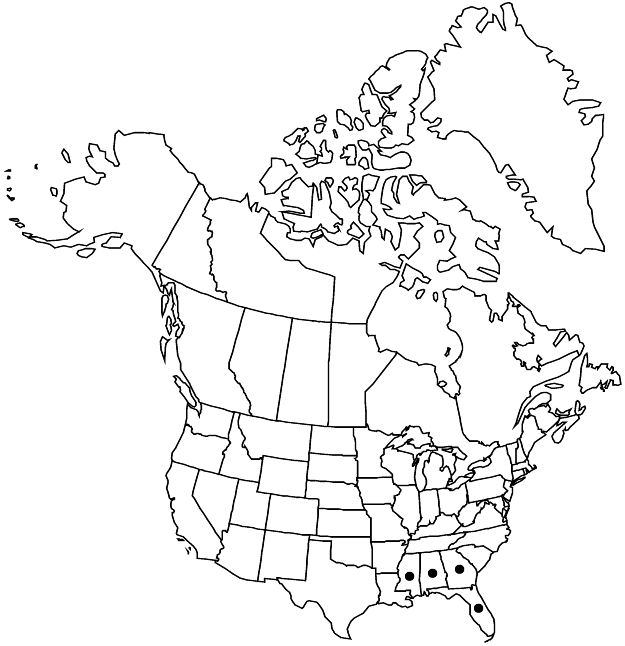Difference between revisions of "Crataegus gilva"
Biltmore Bot. Stud. 1: 60. 1902.
FNA>Volume Importer |
imported>Volume Importer |
||
| (3 intermediate revisions by 2 users not shown) | |||
| Line 15: | Line 15: | ||
|name=Crataegus sargentii var. gilva | |name=Crataegus sargentii var. gilva | ||
|authority=(Beadle) Lance | |authority=(Beadle) Lance | ||
| + | |rank=variety | ||
}} | }} | ||
|hierarchy=Rosaceae;Rosaceae subfam. Amygdaloideae;Rosaceae tribe Gillenieae;Crataegus;Crataegus sect. Coccineae;Crataegus (sect. Coccineae) ser. Pulcherrimae;Crataegus gilva | |hierarchy=Rosaceae;Rosaceae subfam. Amygdaloideae;Rosaceae tribe Gillenieae;Crataegus;Crataegus sect. Coccineae;Crataegus (sect. Coccineae) ser. Pulcherrimae;Crataegus gilva | ||
| Line 39: | Line 40: | ||
-->{{#Taxon: | -->{{#Taxon: | ||
name=Crataegus gilva | name=Crataegus gilva | ||
| − | |||
|authority=Beadle | |authority=Beadle | ||
|rank=species | |rank=species | ||
| Line 54: | Line 54: | ||
|publication year=1902 | |publication year=1902 | ||
|special status=Endemic | |special status=Endemic | ||
| − | |source xml=https:// | + | |source xml=https://bitbucket.org/aafc-mbb/fna-data-curation/src/2e0870ddd59836b60bcf96646a41e87ea5a5943a/coarse_grained_fna_xml/V9/V9_990.xml |
|subfamily=Rosaceae subfam. Amygdaloideae | |subfamily=Rosaceae subfam. Amygdaloideae | ||
|tribe=Rosaceae tribe Gillenieae | |tribe=Rosaceae tribe Gillenieae | ||
Latest revision as of 00:00, 6 November 2020
Shrubs or trees, 20–50 dm. Stems: twigs: new growth reddish, 1-year old deep reddish brown, older dark, dull gray; thorns on twigs straight or slightly recurved, 2-years old dull purplish brown, fine, 2–4 cm. Leaves: petiole length 20–30% blade, glandular; blade broadly lanceolate to narrowly elliptic or very narrowly ovate to narrowly ovate or narrowly ovate-rhombic, 3.5–4.5 cm, base curved-cuneate, lobes 0 or 1–3 per side, sides ± straight, sinuses shallow, LII 0–20%, lobe apex acute distally, margins serrulate, teeth sometimes large, veins 5–7(–9) per side (except smaller leaves), apex acute to acuminate angle from widest lobe to tip ca. 60˚, adaxial veins sparsely hairy especially young. Inflorescences 3–7-flowered; branches glabrous; bracteoles caducous, dense, narrowly oblong to very narrowly obovate, membranous to subherbaceous, margins densely glandular. Flowers (13–)18–20 mm diam.; sepals narrowly triangular, 6–7 mm, margins glandular-serrate; anthers pale pink; styles 3 or 4. Pomes greenish yellow to yellow, orbicular, 5–8 mm diam.; sepals ± reflexed; pyrenes 3 or 4.
Phenology: Flowering Mar–Apr; fruiting Sep–Oct.
Habitat: Woodland edges and gaps, clear-cuts, pine-oak woodlands
Elevation: 0–200 m
Distribution

Ala., Fla., Ga., Miss.
Discussion
Crataegus gilva occurs from Mississippi to Georgia and northern Florida. The leaves are rather like those of C. mendosa, but with an acuminate leaf apex, much sharper lobes (when present) and marginal teeth, and somewhat resemble a less clearly lobed C. pinetorum. The leaves are also usually somewhat like those of C. sargentii but narrower. In the flowering type, they are narrowly elliptic, with cuneate bases, virtually devoid of lobes, with particularly large marginal teeth and acuminate apices, this being the most extreme specimen of the species seen. The suspicion that C. gilva may represent an extreme form of C. sargentii is heightened by the almost complete lack of known fruiting specimens of the species, the fruiting co-type excepted (Harbison 4374/2); nevertheless, that specimen suggests the possibility that the leaves are often wider after anthesis. Crataegus agrestina Beadle, known only from a syntype specimen, is similar.
Selected References
None.